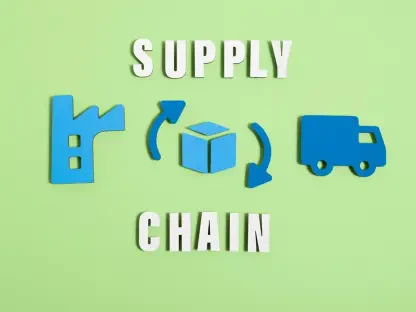Rohit Laila has decades of experience in the logistics industry, spanning supply chain and delivery. He is also passionate about technology and innovation in the sector. Today, he shares insights into C.H. Robinson’s technology strategy, mergers and acquisitions outlook, and freight cycle expectations.
How is C.H. Robinson’s technology strategy evolving to refocus its workforce on higher value tasks?Technology is a game-changer for us due to our scale and the data we deal with. We’re leveraging digital tools and artificial intelligence to handle tedious, less meaningful tasks more efficiently. This approach allows our workforce to focus on higher value services by automating operational tasks and emphasizing the strength of our people in customer- and carrier-facing roles. It’s an integral part of our shift from a tech-first to a people-first strategy.
Can you provide specific examples of how digital tools are being used for recruiting and order processing at C.H. Robinson?Certainly. In recruiting, large language models help us process the extensive volume of resumes we receive, making it easier to identify the key attributes we’re looking for in candidates. This efficiency extends to post-interview notes as well. Regarding order processing, digital tools have shortened the time required for quoting to tracking from hours to just 90 seconds, significantly improving our efficiency.
How does artificial intelligence help the company save 250 to 500 hours each day in order processing?AI automates various stages of the order lifecycle, including quoting, tracking, and other data processing tasks. By removing the manual effort involved in these processes, AI reduces the time significantly, thereby saving hundreds of hours each day. This freed-up time can then be redirected to more strategic and customer-focused activities.
What kind of higher value services are employees now able to focus on thanks to automation?Employees are now spending more time nurturing customer-facing relationships and providing value-added services, such as personalized solutions and strategic planning for clients. This shift enables our workforce to contribute to the company’s growth and market share in a more impactful way.
How is generative AI being utilized specifically in customer- and carrier-facing roles?Generative AI is being utilized to enhance communication and interaction in both customer- and carrier-facing roles. It helps in generating responses, analyzing queries, and providing insights that can improve service quality and resolve issues quickly, leading to better customer satisfaction and more efficient carrier operations.
How does machine learning help in managing resumes and recruitment at C.H. Robinson?Machine learning models analyze the large volume of resumes we receive, identifying the most qualified candidates based on predefined criteria. This reduces the time and effort required for initial candidate screening, ensuring a more efficient and targeted recruitment process.
Can you elaborate on your approach of switching from a tech-first to a people-first strategy?Our shift to a people-first strategy recognizes the value of human capital in delivering exceptional service. While technology and automation handle repetitive tasks, our people can focus on building and maintaining relationships, understanding client needs, and providing tailored solutions. This balance ensures that while we leverage technological advances, we do not lose the personal touch that is critical in our industry.
Mergers and acquisitions (M&A) were mentioned at the Investor Day. What areas are you considering for possible M&A?While we are not opposed to M&A, our priority is on internal efficiencies and strategy improvements. Any potential M&A must align with our core goals and provide significant returns. We look for opportunities that complement our existing capabilities and enhance our market position.
What are the key factors you take into account before pursuing any M&A opportunities?We consider the alignment with our overall strategic goals, the potential for significant returns on investment, and how the acquisition could enhance our core operations. A thorough assessment of the market, competition, and integration capabilities also plays a significant role in our decision-making process.
How do you balance the focus between internal efficiencies and potential inorganic growth?Our approach is to prioritize internal efficiencies and ROI-rich opportunities within the company. Once we’ve optimized our internal operations, we are better positioned to pursue inorganic growth opportunities. This way, we ensure that we are not neglecting any internal potential while staying open to external growth prospects.
You mentioned the importance of being fit, fast, and focused. Can you explain how each of these principles guides your strategy?Being fit refers to optimizing our cost structure, fast relates to our ability to innovate and make swift decisions, and focused means staying concentrated on our core modes: truckload, LTL, ocean, and air. These principles ensure that we operate efficiently, adapt quickly, and stay aligned with our strategic goals.
What do you mean by “return on investment rich” opportunities internally at C.H. Robinson?“Return on investment rich” opportunities are those that promise significant returns with minimal investment. These could be process improvements, cost-saving initiatives, or enhancing existing services that provide substantial returns without requiring large expenditures.
How do you assess when it’s the right time to shift focus to inorganic growth?We assess the right time by evaluating the efficiency and success of our internal operations. Once we see that internal opportunities are fully optimized and yielding high returns, we then consider it the right time to look at inorganic growth, making sure that it aligns with our strategic goals and provides significant value.
What are the current trends you’re observing in carrier capacity and demand that will influence the freight cycle up to 2025?We’re noticing that the burn down of carrier capacity is slower than expected, stretching the cycle beyond the usual 18-24 months to about 33 months. On the demand side, factors such as consumer price index, manufacturing, retail, and housing are critical. While there is a slight uptick, overall demand has been somewhat muted, which we continue to monitor closely.
What factors are contributing to the slow burn down of carrier capacity?Several factors contribute to this, including extended economic uncertainties and carriers holding onto capacity longer than expected. Market conditions, regulatory changes, and fluctuations in demand also play a role in how quickly or slowly carrier capacity adjusts.
How does the consumer price index relate to the freight cycle?The consumer price index is a key indicator of consumer spending and economic health. Higher consumer confidence and spending typically lead to increased production and movement of goods, which positively impacts the freight cycle. Conversely, lower consumer spending can lead to reduced demand for freight services.
Why are manufacturing, retail, and housing sectors important indicators for freight demand?These sectors are major drivers of freight movement. Manufacturing activity dictates the production of goods that need to be transported. Retail indicates how much consumers are buying, influencing inventory restocks and deliveries. Housing impacts the demand for materials and subsequently, freight services.
What preparations are in place for C.H. Robinson to succeed during both low and high points in the freight cycle?We prepare by maintaining a flexible and robust operational framework that adapts to market changes. This includes optimizing our cost structure, leveraging technology for efficiency, and focusing on customer relationships to ensure we can perform well during both low and high points of the freight cycle.
What is your forecast for the freight cycle?The freight cycle is influenced by multiple dynamic factors, including carrier capacity and economic demand. While we continue to see a slower than expected burn down of carrier capacity, we anticipate a gradual normalization towards the latter part of 2025. Demand will likely follow consumer confidence and broader economic trends, so it’s crucial for us to stay adaptable and ready to leverage opportunities as they arise.









